Writing about India in a recent article in the journal The Space Review, the space researcher Daniel Duchaine of the Center for Space Governance, US, said: “With the successful landing of Chandrayaan-3, India cements its status as the fifth-ever great space power. This seismic shift will disrupt the very foundation of the global space order.” How this observation bears out in the near future, however, will depend greatly on how ISRO makes efficient use of the nation’s resources, both public and private, and its own space assets built over the past five decades of its existence and the kind of policies the government puts in place.
LISTEN: Whether ISRO disrupts the “very foundation of the global space order” will depend greatly on how ISRO makes efficient use of the nation’s resources and its space assets, and the kind of policies the government puts in place.
Duchaine based his conclusion on a ranking that he has evolved called the “Space Power Index”, which is a quantitative measure of a country’s prowess in space. When a state crosses 5 per cent of the total share of “space power”, it is considered a great power (Fig. 1). He gives the attribute space power to a country on the basis of cumulative payloads launched and scientific and military capabilities.
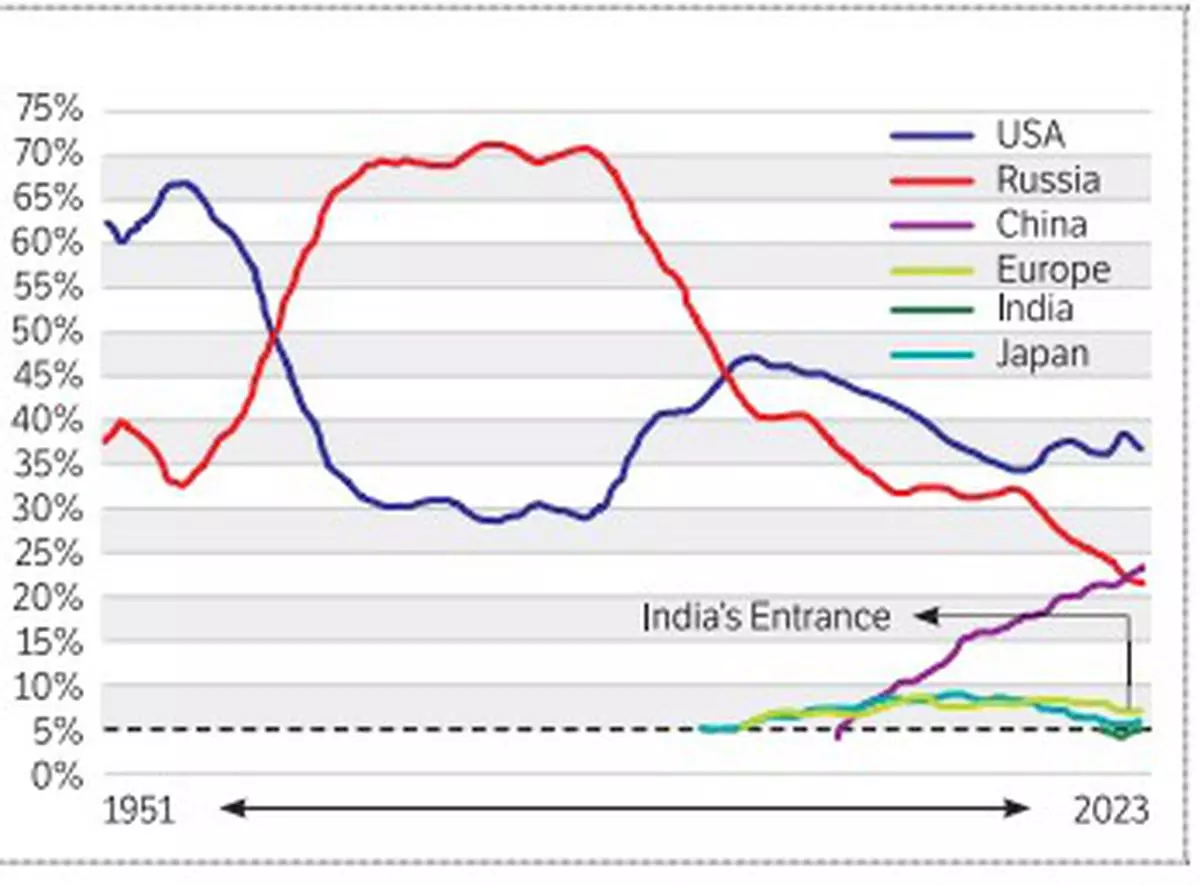
Figure 1: The “space power” share of the great space powers.
| Photo Credit:
Daniel Duchaine/The Space Review, Dec. 2023
“From 2019 [when Chandrayaan-2 was launched. Despite its failed lander, the mission is far from a failure, and its lunar orbiter continues to send good data about the moon],” wrote Duchaine, “India’s space power has seen a remarkable surge, attributed to both striking scientific missions and military capability demonstrations that have caught the world’s attention.” In the same year, India demonstrated its anti-satellite (ASAT) capability and thereby its emergent military capabilities in space.
“By 2022, India held 4.3% of the share of space power, placing it just outside the great space power system. India’s ascent was the successful landing of Chandrayaan-3 in the south polar region of the Moon. This achievement not only shows actual space expertise, it also caught the attention of the world and shifted perceptions of India’s space power…. With the inclusion of Chandrayaan-3 as a scientific achievement, India officially crossed the 5% threshold to 6.6% of the share of space power,” he said.
Also Read | ISRO’s Chandrayaan-3 success is only the beginning
However, as Duchaine noted, India does not launch many objects into space; it has launched only 133 objects as of 2022, which is far fewer than the other great space powers in Duchaine’s ranking, namely, the US, Russia, and China. India had only four orbital launches in 2022 compared with the US’ 74, China’s 62, Russia’s 21, New Zealand’s eight, and the European Space Agency’s five. Indeed, in 2023, despite big milestone achievements, including the solar mission Aditya-L1 that was launched within 10 days of Chandrayaan-3’s successful lunar landing on August 23, ISRO recorded only seven launches.
Indian Space Policy
One of the key expectations of the Indian Space Policy announced in May 2023 (ISP 2023), which was another major development in 2023 in the space sector, is that the provision of an appropriate ecosystem for heightened private sector participation—which, unfortunately, seems to be its raison d’etre—will result in a greater number of orbital launches and space objects launched. We will return to that after discussing the successful Chandrayaan-3 moon mission and the exciting solar probe Aditya-L1 mission.
“India’s space power has seen a remarkable surge, attributed to both striking scientific missions and military capability demonstrations that have caught the world’s attention.”Daniel Duchaine Center for Space Governance, US
Chandrayaan-3 was a forced follow-up mission after Chandrayaan-2, launched on July 22, 2019, with nearly the same objectives, failed in its mission when its lander (Vikram) crashed on the moon on September 6, 2019, while attempting to land. A software error resulting in loss of communication was the cause of the crash. The mission’s payload, however, had also included an orbiter, which continues to send data. Chandrayaan-3 was launched on July 14, 2023, with the lander module (also named Vikram) achieving an incident-free soft touchdown near the lunar South Pole region on August 23.
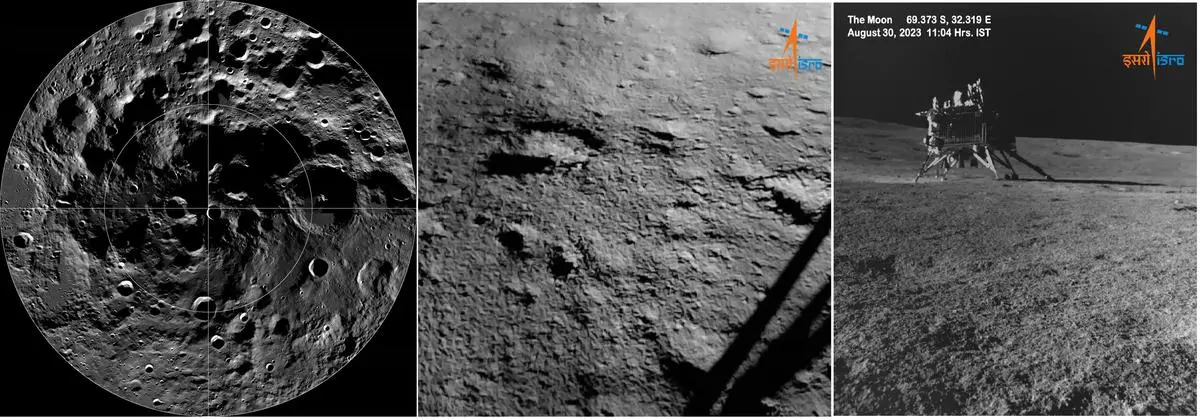
(Left) A mosaic of the South Polar region, width ~600 km, from the Lunar Reconnaissance Orbiter’s Wide Angle Camera. (Centre) A view of Vikram’s landing site—roughly 600 km from the lunar South Pole—after it landed. (Right) An image of Vikram taken by a navigation camera on board the rover Pragyan.
| Photo Credit:
NASA/GSFC/Arizona State University/ISRO/ISRO
Chandrayaan-3’s success is a landmark achievement not only in the history of ISRO but in the history of missions to the moon internationally. It is remarkable on two counts. One, while India may be only the fourth country to land successfully on the moon, it is the first to land near the lunar South Polar region at about 70° latitude, roughly 600 km from the lunar South Pole. Two, with the slew of instruments on board the lander/rover module, Chandrayaan-3 has sent valuable data on the concentration of several minerals, sulphur in particular, in the far side of the moon, which seem to differ significantly from what planetary scientists know so far from studies on the near side of the moon. There are other important findings as well.
Of late, there has been a race among the spacefaring nations to land spacecraft in the lunar South Pole region. Indeed, on August 20, just three days before Chandrayaan-3’s lander module landed there, Russia’s Luna-25 mission crashed in its attempt to land near the South Pole. This was Russia’s first attempt since its last trip to the moon in 1976. NASA, as part of its Artemis programme, is aiming for a South Pole landing of its crewed mission in late 2024.
Figure 2: Variation of temperature on the lunar surface with increasing depth.
| Photo Credit:
ISRO
Why this interest in the rocky and crater- and trench-ridden South Pole?
It is of particular interest for scientific exploration. At the South Pole, the sun hovers below or just above the horizon, creating temperatures upwards of 55°C during the sunlit periods. Indeed, Vikram’s on-board ChaSTE (Chandra’s Surface Thermophysical Experiment) instrument measured surface temperatures of over 60°C (Fig. 2). But even during these illuminated periods, mountainous terrain in the region cast dark shadows, rendering deep craters perpetually dark. Some of these craters have permanently dark regions that perhaps have not been visited by sunlight for billions of years and where temperatures can be below −200°C.
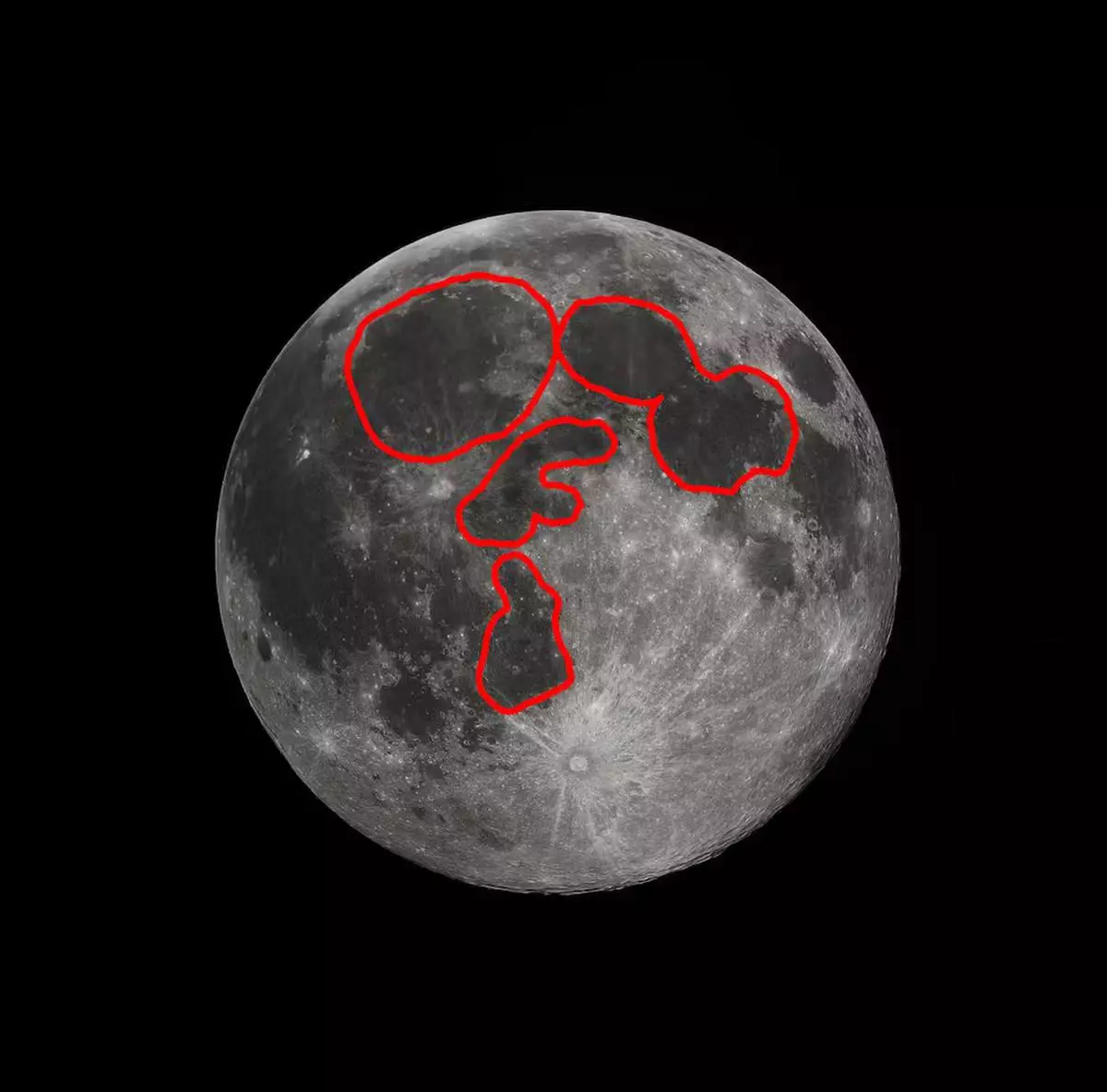
The dark regions of the moon have dark volcanic soil, while the brighter regions have highland soil.
| Photo Credit:
Avrand6/Wikimedia Commons, CC BY-SA
Previous lunar missions, including Chandrayaan-1, mostly to the visible near side of the moon, have revealed that it is not a dormant bone-dry planetary system. But these permanently shadowed regions of the moon will contain information of a different order altogether. They act as traps for an array of volatile substances, including water. Studies have shown large amounts of ice there. The ice could contain volatile solid-state compounds that could provide insights into the history of the moon, earth, and solar system. Ice could be a source of life-sustaining drinking water and oxygen for future manned missions and outposts as well as of hydrogen for fuel for propulsion and other uses. At the National Space Council meeting on March 26, 2019, the then US Vice President, Mike Pence, directed NASA to return to the moon by 2024 because the “lunar South Pole holds great scientific, economic, and strategic value…[we will] mine oxygen from lunar rocks…[and] use nuclear power to extract water from the permanently shadowed craters of the South Pole”. This puts the significance of Chandrayaan-3’s success in the proper scientific and strategic perspective.
On August 24, the day after Vikram’s touchdown, the lunar rover (named Pragyan) was deployed. It ramped down from the lander and travelled a distance of about 100 metres making measurements to derive the elemental composition in the vicinity of the landing site with its on-board instruments: the Alpha Particle X-ray Spectrometer (APXS) and the Laser Induced Breakdown Spectroscope (LIBS).
Figure 3: The first in situ close-range LIBS emission spectrum of the lunar surface. The peaks due to emission lines of different elements—iron (Fe), titanium (Ti), aluminium (Al), sulphur (S), chromium (Cr), calcium (Ca)—are marked.
| Photo Credit:
ISRO
LIBS made the first-ever in situ measurements on the elemental composition of the lunar surface, which, on August 28, unambiguously confirmed the presence of sulphur in the region, something that was not possible for the instruments on board the orbiters. Preliminary analyses (Fig. 3) of the spectral emissions from the material of the lunar regolith using LIBS revealed the presence of aluminium, sulphur, calcium, iron, chromium, and titanium on the lunar surface. Further measurements revealed the presence of manganese, silicon, and oxygen. Investigations regarding the presence of hydrogen are under way, according to the ISRO website. While the relative abundance of minerals other than sulphur was generally as expected, the greater than anticipated abundance of sulphur came as a surprise and is being seen as a significant finding of Chandrayaan-3. This, according to scientists, provides an important insight into the mineral composition and evolution of the moon. Two days later, APXS confirmed the presence of sulphur and the other expected minor elements, such as aluminium, silicon, calcium, and iron.
“The greater than anticipated abundance of sulphur on the south pole region of the moon came as a surprise and is being seen as a significant finding of Chandrayaan-3. ”
On September 4, after 14 earth days (equivalent to one lunar day) of data gathering, with the fall of the lunar night and with no solar irradiance to power their batteries, both Vikram and Pragyan were put on sleep mode. The hope was that they could wake up with the lunar dawn on September 22 and continue their observations. Unfortunately, there was little residual power in the batteries for the sun to be able to kick-start the lander/rover spacecraft module. But if they had woken up, the additional data they would have been able to collect would have been only a bonus; the tasks planned with the two probes as per the mission design were achieved and have already provided planetary scientists with enough surprises to mull over.
“In just under 14 Earth days, Chandrayaan-3 provided scientists with valuable new data….”Jeffrey Gillis-DavisWashington University in St. Louis
“In just under 14 Earth days, Chandrayaan-3 [has] provided scientists with valuable new data and further inspiration to explore the Moon,” wrote the planetary scientist Jeffrey Gillis-Davis of Washington University in St. Louis in the online magazine The Conversation after Vikram went into its sleep mode.
Also Read | The unsung heroes behind ISRO’s successful moon landing
There are, noted Gillis-Davis, two main rock types on the moon’s surface: dark volcanic rock and brighter highland rock. According to him, laboratory studies on soil and rock compositions on earth have found that materials from dark volcanic plains tend to have more sulphur, which mainly comes from volcanic activity, than the brighter highlands material. “Rocks deep in the Moon contain sulphur, and when these rocks melt, the sulphur becomes part of the magma. When the melted rock nears the surface, most of the sulphur in the magma becomes a gas that is released along with water vapour and carbon dioxide. Some of the sulphur does stay in the magma and is retained within the rock after it cools. This process explains why sulphur is primarily associated with the Moon’s dark volcanic rocks,” explained Gillis-Davis. So, one does not usually expect a high concentration of sulphur in the highland soil.
Highlights
- Chandrayaan-3’s landing near the lunar South Polar region is a landmark achievement, making India only the fourth country to land successfully on the moon and the first to do so in that region.
- On the basis of this success, the space researcher Daniel Duchaine of the Center for Space Governance, US, assigns India the status of the world’s fifth-ever great space power.
- Whether India can maintain this ranking will depend greatly on how ISRO makes efficient use of the nation’s resources, both public and private, and its own space assets built over the past five decades.
- And it depends on the government putting in place appropriate policies and regulatory mechanisms for the space sector.
Chandrayaan-3’s measurement of sulphur in polar regolith is the first-ever finding that suggests that the moon’s highland soils near the poles might have a higher sulphur concentration than the highland soils from the equator and possibly even higher than the dark volcanic soils, Gillis-Davis observed. “These initial results give planetary scientists like me who study the Moon new insights into how it works as a geologic system. But we’ll still have to wait and see if the fully calibrated data from the Chandrayaan-3 team confirms an elevated sulphur concentration,” he said.
According to him, this compositional difference between polar and equatorial soils likely comes from the different environmental conditions between the two regions. The poles get less direct sunlight and thereby attain very low temperatures, which could result in atmospheric sulphur being frozen in the regolith. Clearly, Chandrayaan-3’s finding has opened a new avenue of research in the study of the geology of the moon and its evolution.
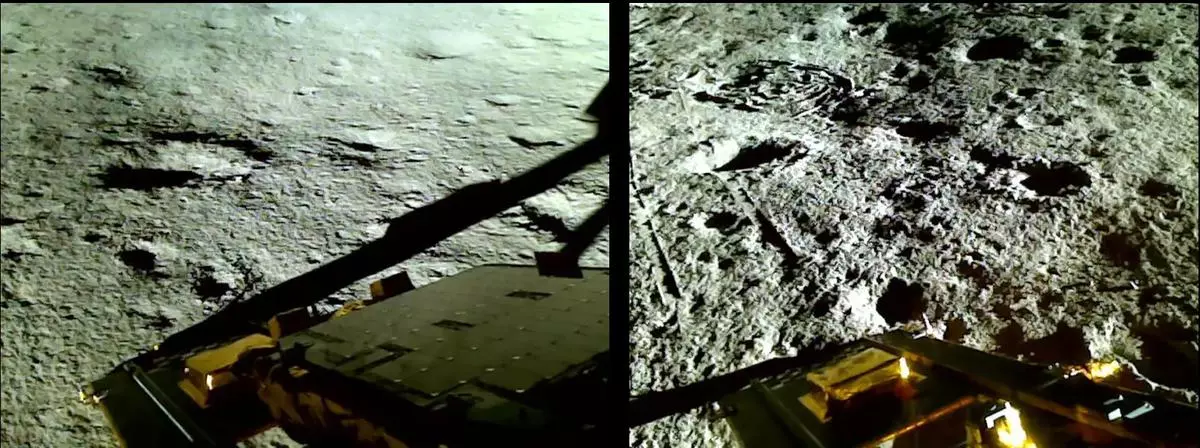
Images taken by Vikram’s Imager-1 camera before and after the “hop experiment”.
| Photo Credit:
ISRO
Before the Vikram/Pragyan duo retired, ISRO carried out a “hop experiment” with the lander. In this test, the lander jumps from its landing site and moves a little sideways and soft-lands again, a helicopter-like controlled vertical take-off and vertical-landing (VT-VL). On command, it fired the engines, elevated itself by about 40 cm as expected and landed safely 30-40 cm away. The test was a demonstration of ISRO’s capability in achieving VT-VL manoeuvres through remote command and control. “This ‘kick-start’ enthuses future sample return and human missions!” ISRO remarked on X (formerly Twitter).
“Aditya-L1 will be a comprehensive solar and space environment observatory to provide information, among other things, about coronal heating and pre-flare and flare activities and their characteristics. ”
Coronal heating is one of the major problems in solar physics. The sun’s corona lies above the chromosphere and extends millions of kilometres into outer space. Spectroscopic measurements indicate strong ionisation in the corona and a plasma temperature of about 2 million °C, much hotter than the lower atmosphere close to the surface of the sun, the photosphere, which is only about 6,000°C. This leads to the question of how the almost 300 times hotter coronal temperature can be maintained by thermal processes in apparent violation of the second law of thermodynamics, according to which heat cannot be transported from a lower temperature region to a higher temperature region. It would seem that the energy is transported up into the corona and then converted into heat by non-thermal processes.
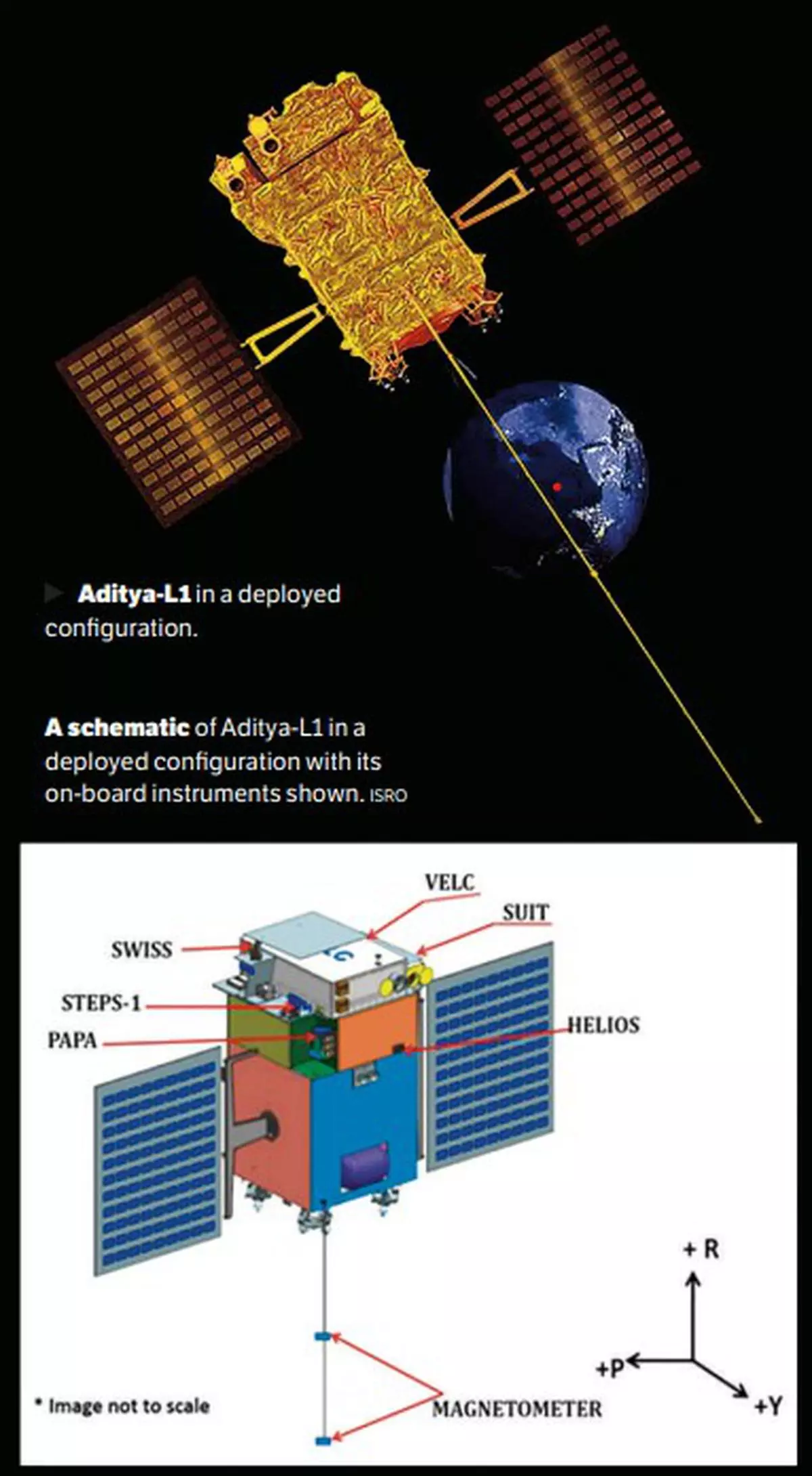
(Top) Aditya-L1 in a deployed configuration, and a schematic of Aditya-L1 in a deployed configuration with its on-board instruments shown.
| Photo Credit:
ISRO
Aditya-L1 will address this problem by obtaining near-simultaneous images of the different layers of the sun’s atmosphere to study the ways in which energy is channelled and transferred from one layer to another. The mission, with its payload comprising a suite of seven instruments (four for remote sensing of the sun and three for in situ observations), is aimed at understanding some of the unsolved problems in solar physics and heliophysics (the science of the sun-solar system connections), in particular how the sun’s radiation affects the dynamics of the earth’s atmosphere on a shorter and a longer time scale. Thus, Aditya-L1 will be a comprehensive solar and space environment observatory located around the Lagrange Point L1 in a halo orbit to provide information about coronal heating, coronal mass ejection, pre-flare and flare activities and their characteristics, dynamics of space weather, propagation of particles and fields in the interplanetary medium, and so on.
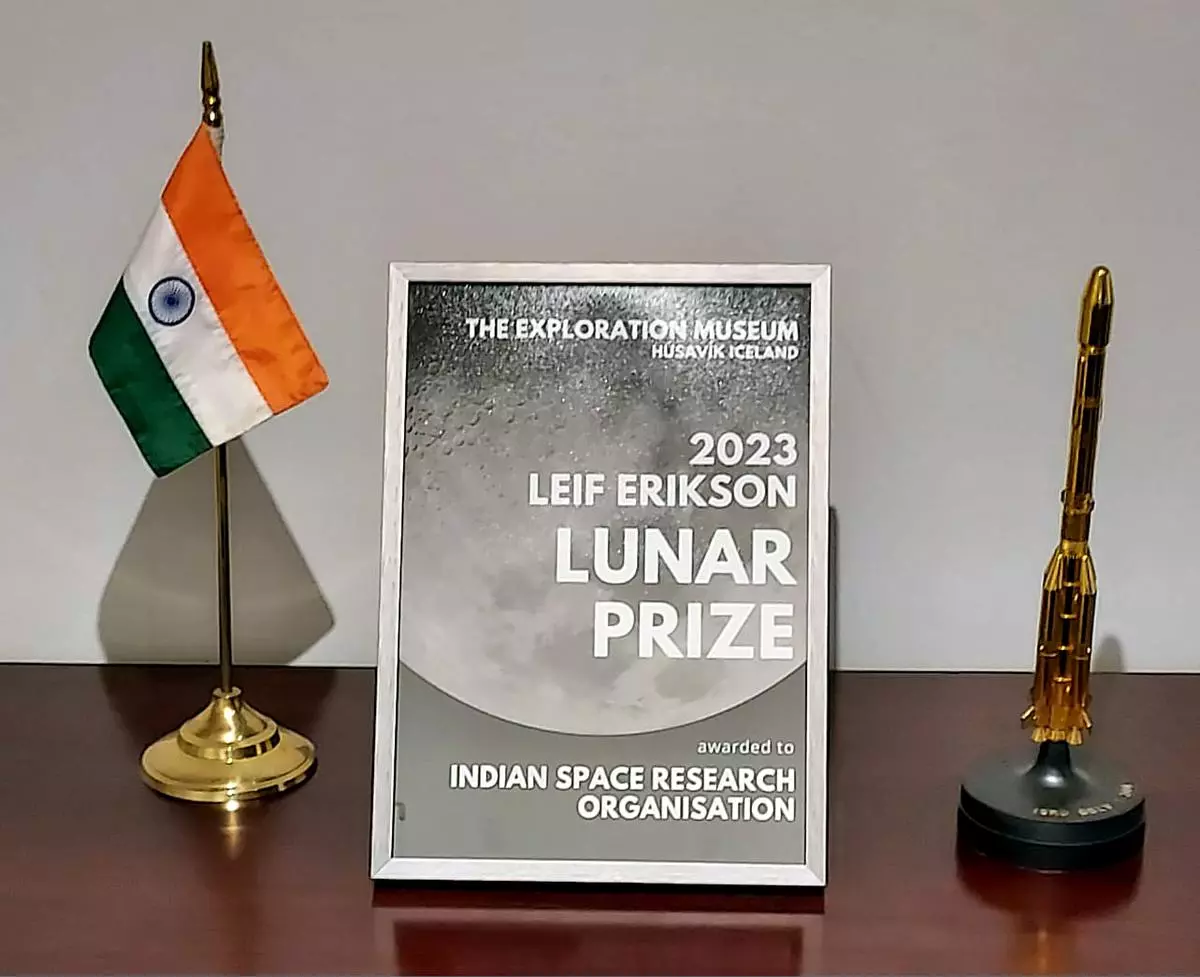
On December 20, the Husavik Museum, Iceland, awarded ISRO the Leif Erikson Lunar Prize for its indomitable spirit in advancing lunar exploration and contributing to understanding celestial mysteries with Chandrayaan-3.
| Photo Credit:
ANI
(Lagrange points are positions in space where objects located there tend to stay put. At these, the gravitational pull of two large masses precisely equals the centripetal force required for a small object, such as a spacecraft, to move with them. There are five of them for the sun-earth system. These points in space can be used by space observatories to reduce the fuel consumption needed to remain in position. L1 is located on the straight line joining the sun and the earth at a distance of 1.5 million km from the earth, about four times the earth-moon distance. A halo orbit is a periodic, 3D orbit around a Lagrange point and involves an out-of-plane motion component relative to the primary bodies. The orbit is large enough in size to be continuously viewed from the earth and would appear as a halo around the Lagrange point. From the vantage position around L1, Aditya can view the sun continuously without the interference of any occultation or eclipse.)
After its launch, Aditya-L1 underwent four earth-bound manoeuvres, and from its final 256 km × 1,21,973 km orbit around the earth, its trajectory was directed towards L1 on September 18, at which point its instruments began to collect data. It will reach its destination on January 7, 2024, about 127 days from its launch date. On September 30, the spacecraft escaped the sphere of the earth’s influence. Five instruments have already been made operational. The payload HELIOS captured a high-energy X-ray glimpse of a solar flare on November 7 and caught full disc images of the sun in UV wavelengths on December 8. So, exciting moments lie ahead for solar astrophysicists.
The achievements of the above missions are clearly advanced enough in their scientific and technical scope to attract Duchaine’s epithet of a “great space power”. However, Duchaine also noted that there was no guarantee that India would continue to grow as a space power to match the US, Russia, or China. He observed that Europe and Japan never crossed 10 per cent of the global share of space power but there was potential for India to grow by increasing the number of space objects launched, which he believed the recently declared ISP 2023 would enable if properly implemented. Currently, India’s share of the global space market of over $360 billion is about 2 per cent. However, strategic foresight on the part of the government and the other necessary domestic policy measures, particularly regulatory, are found wanting in ISP 2023.
India already has two stand-alone policies for the space sector: the Satcom Policy of 1997, which deals with different aspects of satellite communication, and the Remote Sensing Data Policy of 2011. The science writer and policy analyst D. Raghunandan wrote this about ISP2023 in the online news portal NewsClick: “This is the latest in a long series of similar attempts which predictably failed due to faulty assumptions about national priorities in the space sector, the interests and capabilities of the private sector in India, and the interests and motivations of foreign entities to invest in the Indian space sector. The current ISP 2023 suffers from a repetition of all these weaknesses and a failure to learn from past mistakes. It compounds past misjudgments by adding several new and serious infractions of both Indian and international legal frameworks.”
ISP 2023 also seems to be a stand-alone policy and not a comprehensive space policy that includes security issues and civil-military linkages. It seems to be mainly aimed at throwing open the doors of the entire space sector, barring the areas of security and the military, to the private sector, called non-governmental entities (NGEs) in the policy. It seeks to provide NGEs with a laissez-faire environment in which to operate in the space sector with no hint of any regulatory framework.
Also Read | 1963: First rocket launch from Thumba
While ISRO has been engaged with the private sector since its inception—over 500 NGEs are currently participating in ISRO’s various programmes—this has mainly been in the nature of vendors of both hardware and software or subcontractors and manufacturers of parts and subsystems for different missions. ISP 2023 seeks to turn the present “supply-driven” ecosystem into a “demand-driven” one. “The elephant in the room is the complete absence of a legislative framework and not even a hint of introducing suitable legislation, as was… envisaged in 2019-21,” wrote Raghunandan.
At an even more serious level, space law experts have pointed out inconsistencies between ISP 2023 and international space treaties. While the collective brainpower of ISRO scientists has brought about a phase change in India’s status as a space power, the actions of the executive and legislative arms of the government suggest a lack of application of mind with regard to putting in place policy measures for the space sector.

